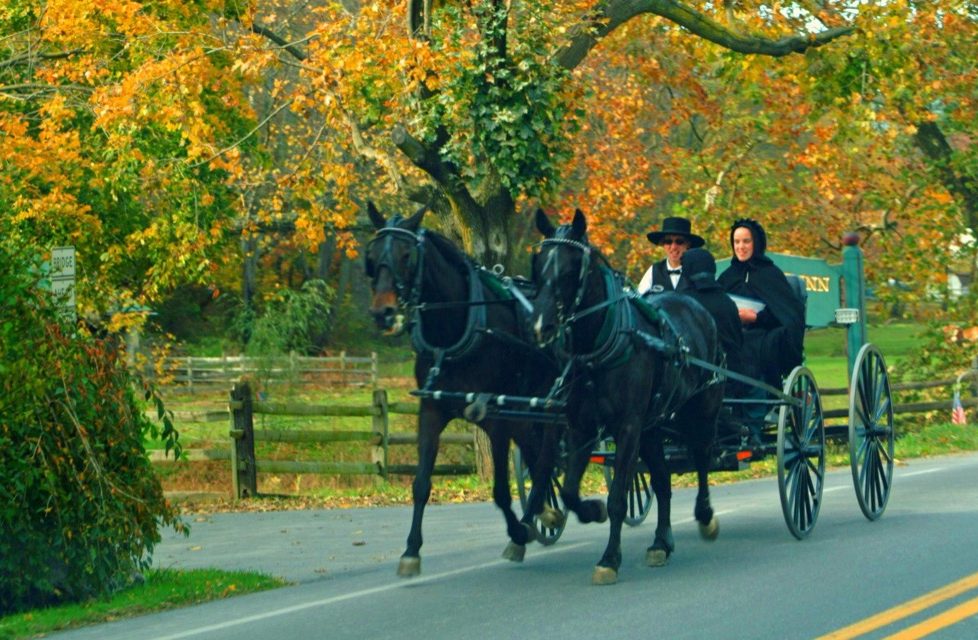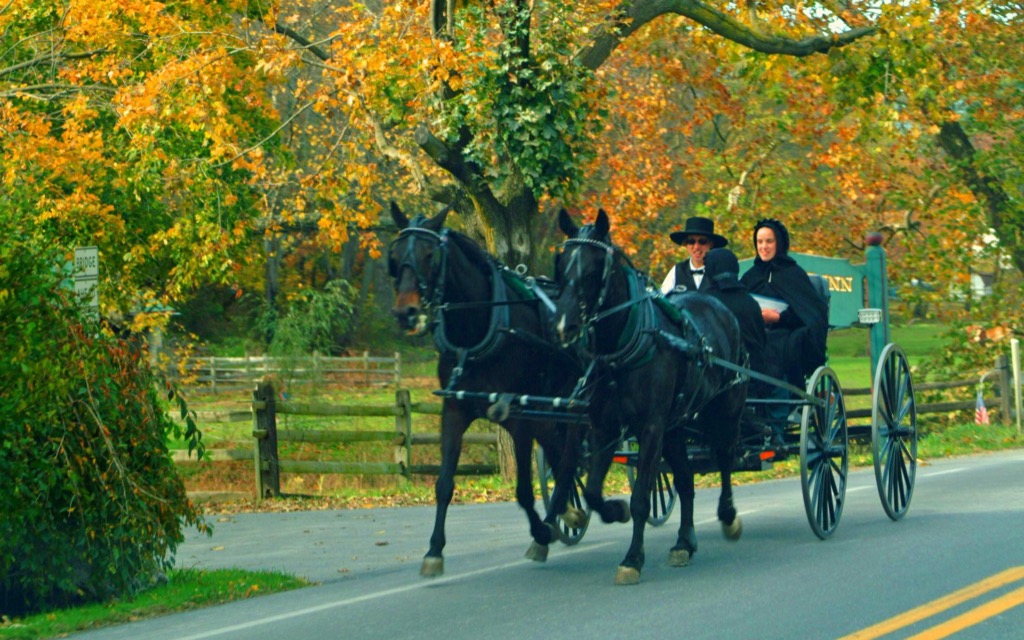Learning From My Amish Neighbor, by 3AD Scout.


In February of this year, our neighbor sold his two houses and business. One of those houses was sold to our new neighbors. They are Old Order Amish who still do not use any electric lights on their buggies but rather use Kerosene lamps. It has been an interesting few months watching them transform their new-to-them home to their off-grid Amish lifestyle. I was wondering how the new owners would heat the large old farmhouse and get their water since the old neighbor used electricity for such things. The previous neighbor had an outside wood furnace that supplied both heat for the old farmhouse and hot water. I drove by one afternoon to see the furnace was gone.
The next day there was a large group of Amish men putting up a new shiny stainless steel stove pipe in what would be the living room. The next day the large group of men put up another pipe on the outside of the kitchen wall. A few days later there was a large wind storm and I found an empty 275-gallon plastic container from an IBC tote in my pasture. I secured it and asked the Mennonite neighbor if it was his or the old neighbors. I didn’t think it was from the Amish neighbor’s house since it is a ways away for the wind to blow it from. I talked to the old neighbor who said the new Amish neighbor was looking for it. So, I loaded the tote up in the back of the pickup and drove over to return it. The Amish neighbor was busy with renovations inside the house and I quickly introduced myself and told him I had found his tote.
I noticed that the house’s old bathroom shower stall was out in the backyard. It was obvious they wouldn’t be using running water for a shower or for toilets. On the back of the house, just outside the back door on part of the cement patio was a wooden shed about 8’x12’ that the young Amish couple would be using as an outhouse (they use a composting bucket system).
One night, a few weeks later, there was a knock on the back door and our new neighbors were on the porch we invited them in and they handed us a warm apple pie. We talked for about an hour. The young man does construction and I said we would be interested in a quote for a new front porch and stairs. The couple came over a few nights later and the husband and I took measurements and talked about layout. We talked for about another hour and he asked if I had a “plow” to turn over the grass in his backyard. He said they wanted to use that part of the yard for the garden versus where it was currently on the property. I told him I did not have a plow but I did have a rototiller. We discussed the shortcomings of using just the rototiller and he said he would look for someone with a 2-bottom plow. The couple left and the neighbor said he would get me a quote in about a week.
The following weekend I went to an auction that had a 500-gallon aluminum military surplus fuel tank that I really wanted. Before the tank came up for bid my wife texted me that the neighbor was wondering if I could bring over the back-hoe to help dig up his water line. I told my wife to let him know I would probably be home around 3 to 3:30 and then I would gladly help. I won the bid on the fuel tank and three filing cabinets. When I got home I headed over to the neighbor. They had dug up and found the wellhead did not need my back-hoe. I was really interested in what he was doing and he started to explain his water system. The system started with a 5 horsepower engine mounted on, what looked to be a 4” diameter piece of steel pipe that drives a belt that then went through the wall of the house into the basement.
The “V” drive belt was different looking and I asked about it and the neighbor said it was an adjustable link belt. He took me down into the basement and the belt was hooked up to a line-shaft type system that had several pillow blocks that had a long (maybe 12’) shaft. The shaft ran two things, one being the belt-driven centrifugal water pump and the other an older style wringer washing machine that was popular in the 1950s.
At the end of the line shaft, they attached a flexible shaft so they could move the washing machine around. The water pump pumped the water up to a 500-gallon tank in the barn so that the water to the home was actually gravity-fed from the tank. The barn is uphill from the home and the tank was high up in one of the lofts. The neighbor had beefed up the joist and decking to help support the massive weight of the tank when filled.
Across from the washing machine was what looked like a stainless steel kiln. I could see some orange flames near the bottom of the contraption. I asked what it was it my neighbor said that it was their hot water heater. He opened the lid to show me about 10-15 gallons of water.
I asked about refrigeration, expecting them to say that they would use a propane refrigerator. To my surprise, they said they would use an old ice box and blocks of ice. Currently, my neighbor has to go and pick up ice from a local Amish person who has a large ice house. My new neighbor said that he would be building his own ice house to store ice harvested in the winter.
When my neighbor built the new porch and stairs fro my house, he used cordless power tools. About a month after he was done building the porch he stopped by to see if I had an extra “brace” and bits I wanted to sell. I looked at him kind of puzzled and asked him why he did not use his cordless drill. He said that for his business he can use the cordless tools but at his home he had to use non-electric tools. He picked out a brace and some bits and went on his way to fix his barn up.
The Amish “barn raisings” are well known, that is where the Amish community comes together to build a barn for someone in the community. This labor assistance is not just limited to building barns but I have seen several “work parties” at my neighbor’s house in the short amount of time he has been there. I watched one night as they put up a new 3-strand barbed wire fence around the pasture and orchards of my neighbor’s home. When I let the dogs out at 11 pm they were still working away but with headlamps and having a good time.
I stopped by to see if my neighbor needed anything when I was at the hardware store. He was in his barn with about a dozen other Amish men. I walked into the barn and was amazed at the transition. I had been in that barn probably a hundred times or more. Now, in the transition, the barn included new cement floors and several newly built stalls for the horses with built-in hay feeders. The labor assistance does not stop with the men. The women make a feast for everyone to enjoy after the work is done. When I rototilled their new garden area, immediately after I got done a half dozen Amish women were helping to plant the garden. In a sense, the Amish have the best Mutual Assistance Group (MAG) around.
I have also learned that in Amish culture there is a distinctive division of labor among the men and women, based on historical roles. If I have a question about animal husbandry I need to talk to the husband but if I have a gardening question I need to talk to the wife. This division of labor works, but I prefer to have a little knowledge about many things, especially things that can keep me alive and well. I’m a firm believer in cross-training.
I have learned a lot from my Amish neighbors in a few short months and I’m confident that we will continue learning more about how they live off-grid. My neighbor has told me that he already bought a cider press and plans on making cider out of the majority of his apples since his family consists of just him and his wife at this time and they have a well-established apple orchard. I look forward to helping them press the apple and learning how they preserve and use their cider.
